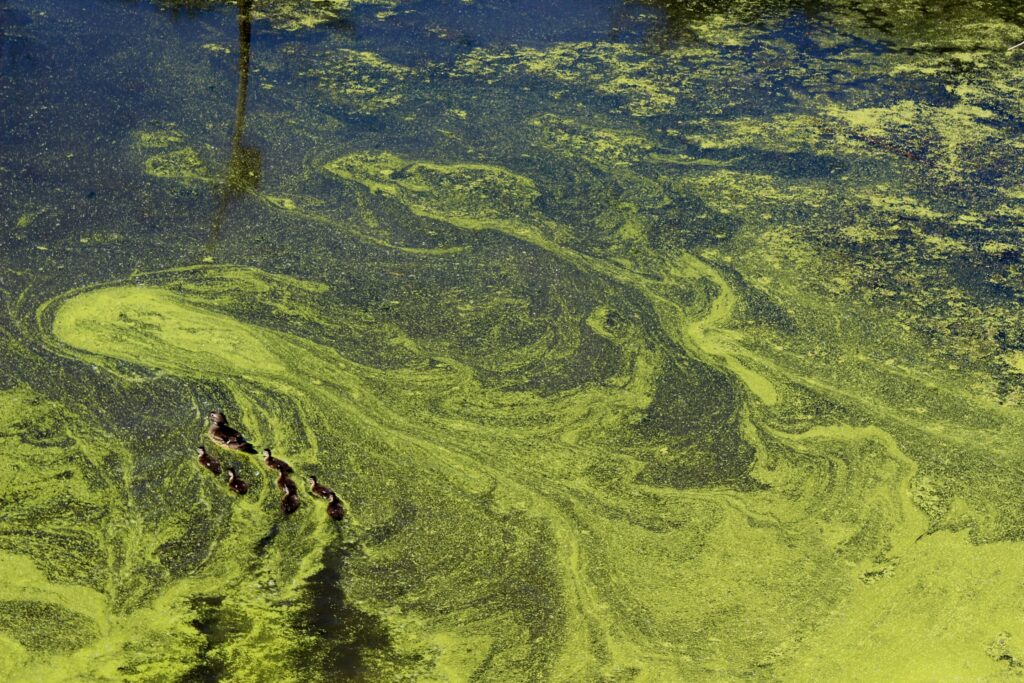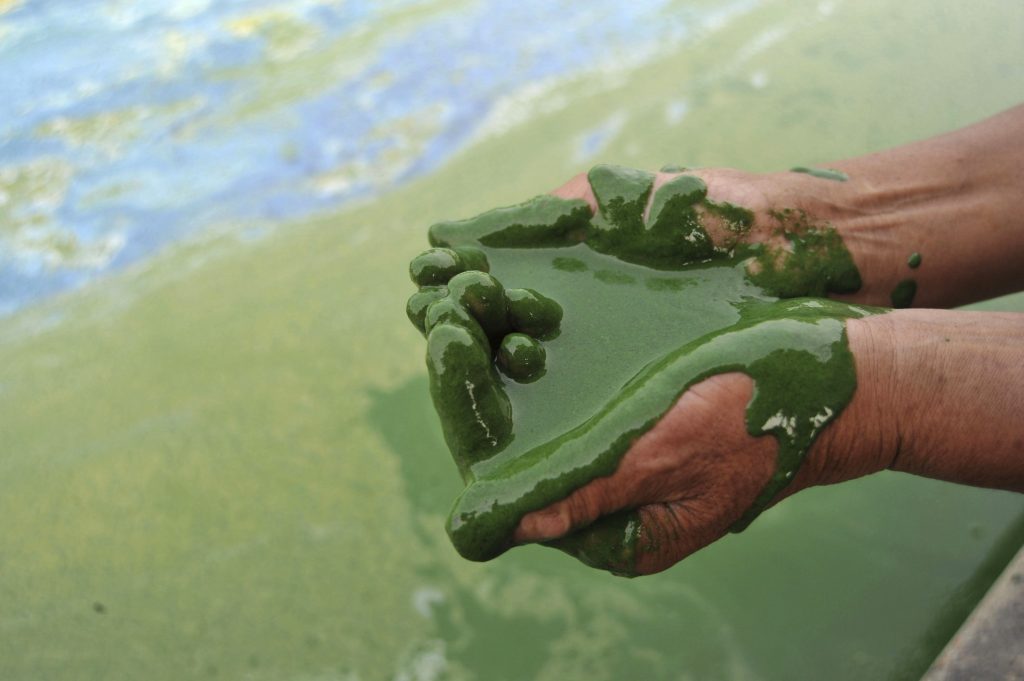Algae and Harmful Algal Blooms (HABs): What You Need to Know
Algae are a natural part of lake ecosystems, but under certain conditions, they can grow out of control and form harmful algal blooms (HABs). These blooms can threaten water quality, aquatic life, and even human health. Here’s what you need to know to understand, identify, and prevent HABs.
What Are Algae and Harmful Algal Blooms?
- Algae: Microscopic, plant-like organisms that live in water and are essential to the ecosystem, providing oxygen and serving as a food source for aquatic life.
- Harmful Algal Blooms (HABs): Rapid growth of certain algae (often cyanobacteria, also called blue-green algae) that can produce toxins harmful to humans, pets, and wildlife.
How to Recognize a Harmful Algal Bloom
HABs can vary in appearance, but look out for these signs:
- Water that looks like pea soup or is covered in a green, blue, or red scum layer.
- Discolored water with streaks or mats of algae.
- A strong, unpleasant, or musty odor.
Warning: Not all algal blooms are toxic, but it’s best to avoid contact with water during a bloom.

Why Are HABs a Problem?
HABs can negatively impact:
- Human and pet health: Some algae produce toxins that can cause rashes, vomiting, diarrhea, liver damage, or even neurological issues if ingested or inhaled.
- Aquatic life: HABs deplete oxygen in the water, causing fish kills and damaging ecosystems.
- Water quality: Blooms can clog filters, make water unsafe for drinking, and lead to costly cleanup efforts.
What Causes Harmful Algal Blooms?
HABs are triggered by a combination of environmental factors, including:
- Excess nutrients (phosphorus and nitrogen): From fertilizers, septic systems, or agricultural runoff.
- Warm water temperatures: HABs thrive in warm, stagnant water during summer and early fall.
- Still water: Limited water flow encourages algae growth.
Sewage & Septic
Friends Lake does not have a municipal sewer system and properties should have a septic system: an underground wastewater treatment structure that uses a combination of natural and technological processes to treat wastewater from household plumbing produced by bathrooms, showers, kitchen drains and laundry. It is important to properly maintain your septic system to prevent leaching/run-off into the lakes or streams which flow into the lake.
The NYS Department of Health recommends that septic tanks should be pumped out every two to three years. A septage waste transporter (septic tank pumper) that is licensed by the New York State Department of Environmental Conservation can inspect, measure tank layers and pump out the tank when necessary. Its publication Septic System Operation and Maintenance provides excellent guidance.
Detergent & Fertilizer Runoff
The NYS Nutrient Runoff Law prohibits the application of lawn fertilizer containing phosphorus within 20 feet of any surface water except where there is a vegetative buffer of at least 10 feet; or where the fertilizer is applied by a device with a spreader guard, deflector shield or drop spreader at least three feet from surface water. The application of lawn fertilizer containing nitrogen, phosphorus, or potassium between December 1st and April 1 is also prohibited.
Fertilizer labels have three bold numbers. The number in the middle is the percentage of phosphorus in the product, e.g. 22-0-15. Use of products with 0.67 in the middle or lower is not restricted. Products with a number higher than 0.67 may only be used if a new lawn is being established or a soil test indicates it is necessary.
The law also prohibits the sale of phosphorus-containing dishwasher detergents for household use.
How Can You Help Prevent HABs?
You can take action to reduce the risk of HABs by minimizing nutrient pollution:
At Home
- Limit fertilizer use: Use only the recommended amount and apply it far from the lake. Switch to phosphorus-free options when possible.
- Maintain septic systems: Regularly pump and inspect systems to prevent nutrient leaks.
- Keep stormwater runoff clean: Direct rainwater into gardens or rain barrels instead of letting it flow untreated into the lake.
At the Shoreline
- Plant native vegetation: Native plants filter runoff and prevent erosion. Avoid clearing vegetation near the lake.
- Create buffer zones: Maintain a strip of natural vegetation along the shoreline to absorb nutrients.
- Avoid overwatering lawns: Excess water can carry nutrients into the lake.
On the Lake
- Use boats responsibly: Minimize stirring up sediment, which can release nutrients into the water.
- Don’t dump waste: Never release waste, fuel, or chemicals into the lake.
Harmful Algal Blooms – Report it!
If you suspect a harmful algal bloom:
- Avoid contact: Keep people and pets out of the water.
- Report it: Contact your local environmental agency or water authority.
- Follow local advisories: Stay informed about water safety updates.
The Water Quality Committee needs your help to detect any Harmful Algae Blooms (HAB) that may occur on Friends Lake. Because an Algal Bloom can appear at any time and at any location on the lake, it is impossible for a small committee to detect when and where they are occurring. Learn more about HABs. Everyone should take the time to read the information and understand the difference between an “Algal Bloom” and a “Harmful Algal Bloom”.
If you suspect that you have seen a HAB, please report it to New York State Department of Environmental Conservation (NY DEC). Fill out and submit a Suspicious Algal Bloom Report Form.

